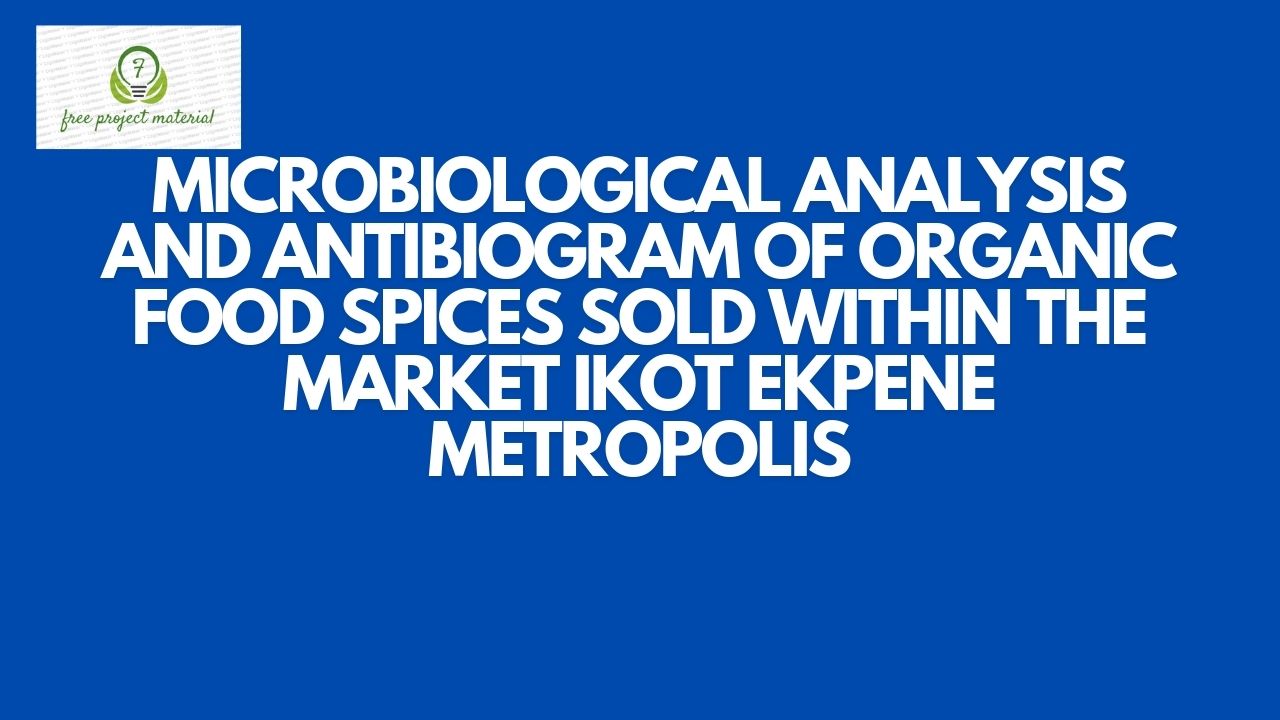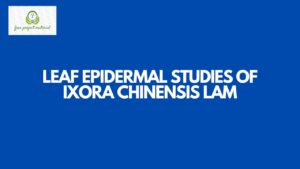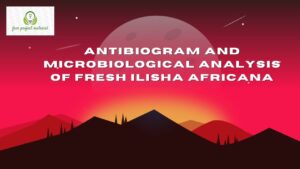ABSTRACT
The microbiological analysis and antibiogram of organic food spices sold within the market Ikot Ekpene metropolis was analysed following aspetic techniques and result shows the presence of Streptococcus sp 20%, Staphylococcus sp 20%, Bacillus sp 20%, Klebsiella sp 6.6%, Escherichia coli 66%, Micrococcus sp 20% and Enterobacter 66%. The colony count of bacteria showed sample OFSD with the highest growth of 18.7×104 cfu/g showed the host and antibiogram test was performed using commercial antibiotic disc (positive and negative) which determined the predominant antibiotic for organism. In positive Streptococcus sp was sensitive to (E,S) staphylococcus sp to (LEV) and Bacillus to (LEV, CN) while in negative Escherichia coli was sensitive to (CXP), Klebsiella to (PEC). The low presence of organism of the sample can be attributed to improved handling and production packaging of organic food spice which has upgraded the sanitation of the sample. Thereby reducing the microbial load to acceptable level but spices handlers should not slow down in their standard of` hygiene to avoid recording health issues after consumption.
TABLE OF CONTENTS
Title page – – – – – – – – –
Certification – – – – – – – –
Dedication – – – – – – – – –
Acknowledgements – – – – – – –
Abstract – – – – – – – – –
Table of contents – – – – – – – –
CHAPTER ONE
1.0 INTRODUCTION
1.1 Background of the Study – – – – – –
1.2 Aim and Objectives of the Study – – – –
1.3 Significance of the Study – – – – –
1.4 Scope and Limitation of the Study – – – –
CHAPTER TWO
2.0 LITERATURE REVIEW
2.1 General Description of Spices – – – – –
2.2 Chemical Properties of Spice – – – – –
2.3 Types of Spices – – – – – – –
2.4 Health Benefits of Spices – – – – –
2.5 Use of Spices as Flavoring Agents – – – –
2.6 Handling of Spice – – – – – – –
2.7 Nutritional Profile of Spices - – – – –
2.8 Processing and Distribution of Spices – – – –
2.8.1 Antimicrobial Potency of Spices – – – –
2.8.2 Clove and Cinnamon – – – – – –
2.8.3 Oregano and Thyme – – – – – –
2.8.4 Rosemary and Sago – – – – – –
2.8.5 Toxicological Aspect of Spices – – – –
CHAPTER THREE
3.0 MATERIALS AND METHOD
3.1 Sources of Sample Collection – – – – –
3.2 Sterilization of Glassware and Media – – – –
3.3 Microbiological Analysis of the Sample – – –
3.3.1 Analysis of the Sample – – – – – –
3.3.2. Enumeration of Bacterial Isolate – – – –
3.3.3 Purification of Bacterial Isolate – – – –
3.3.4 Identification and Characteristic of Bacteria Isolate –
3.4. Antibiogram Analysis – – – – – –
3.5 Susceptibility Test – – – – – –
CHAPTER FOUR
4.0 RESULTS AND DISCUSSION
4.1 Results – – – – – – – –
4.2 Discussion – – – – – – – –
CHAPTER FIVE
5.0 CONCLUSION AND RECOMMENDATION
5.1 Conclusion – – – – – – – –
5.2 Recommendation – – – – – – –
References
Appendix
CHAPTER ONE
INTRODUCTION
1.1 Background of the Study
Spices could be described as the natural vegetables products or mixtures thereof, without any extraneous matter that is used for flavoring, seasoning and imparting aroma to foods International Standards Organization (ISO, 2000). Spices have many applications namely as medicinal, preservatives and coloring agents Spices like other food substances, may carry some bacteria, yeasts, moulds spores and even some insects. The predominant flora is generally composed of aerobic spore and non spore forming bacteria, indicator organisms and some pathogens may also be found. Coliforms were isolated and characterized to be E. coli, Klebsiella spp, Pectobacterium spp and Enterobacter (Bozin et al., 2008).
Spices do not have a marked bacteriostatic effect in the concentrations used in meat products and they may even serve as source of contamination of processed product. Spice have an occurrence of microorganisms that are potentially pathogenic in spices used in suya preparation is considered as major cause of gastrointestinal disturbances resulting from the consumption of suya in Nigeria (Parthasarathy et al., 2018).
Unless spices are treated to reduce their microbial content, they may add high numbers and undesirable kind of organisms to food in which they are used.
Spice ingredients are thought to have some antimicrobial activities, and yet meat treated with spices have high microbial load (Shamsuddeen and Ameh, 2008).
1.2 Aim and Objectives of the Study
The objective and the study are;
- To isolate and identify the organisms present in different food spices
- To carryout antibiogram on the isolates using commercial antibiotics
- To give useful recommendation based on the proper production and handling of organic food spices to the point of the consumer
1.3 Significance of the Study
The significance of this work is to enable those producers and uses of organic food spices to improves the level of hygiene on species and processing on s and also to identify the various sources of contamination in the product which can cause gastrointestinal disturbances.
1.4 Scope and Limitation
This research work is only limited to the microbiological analysis and antibiogram of organic food spices sold within the markets in Ikot Ekpene metropolis. During the course of this work. Financial constraint and constant power failure was experienced, time factors for laboratory test cause setback to this work.


